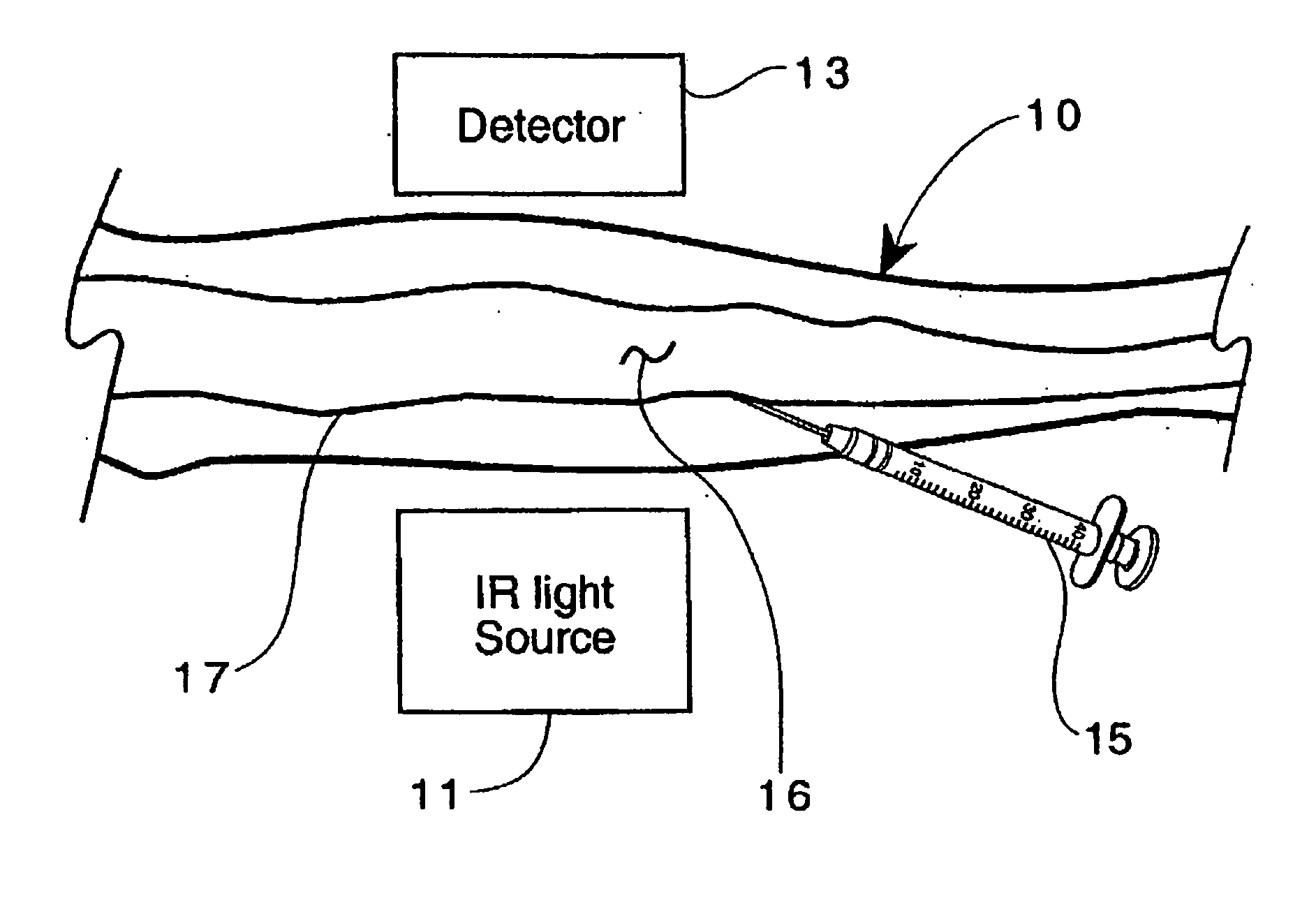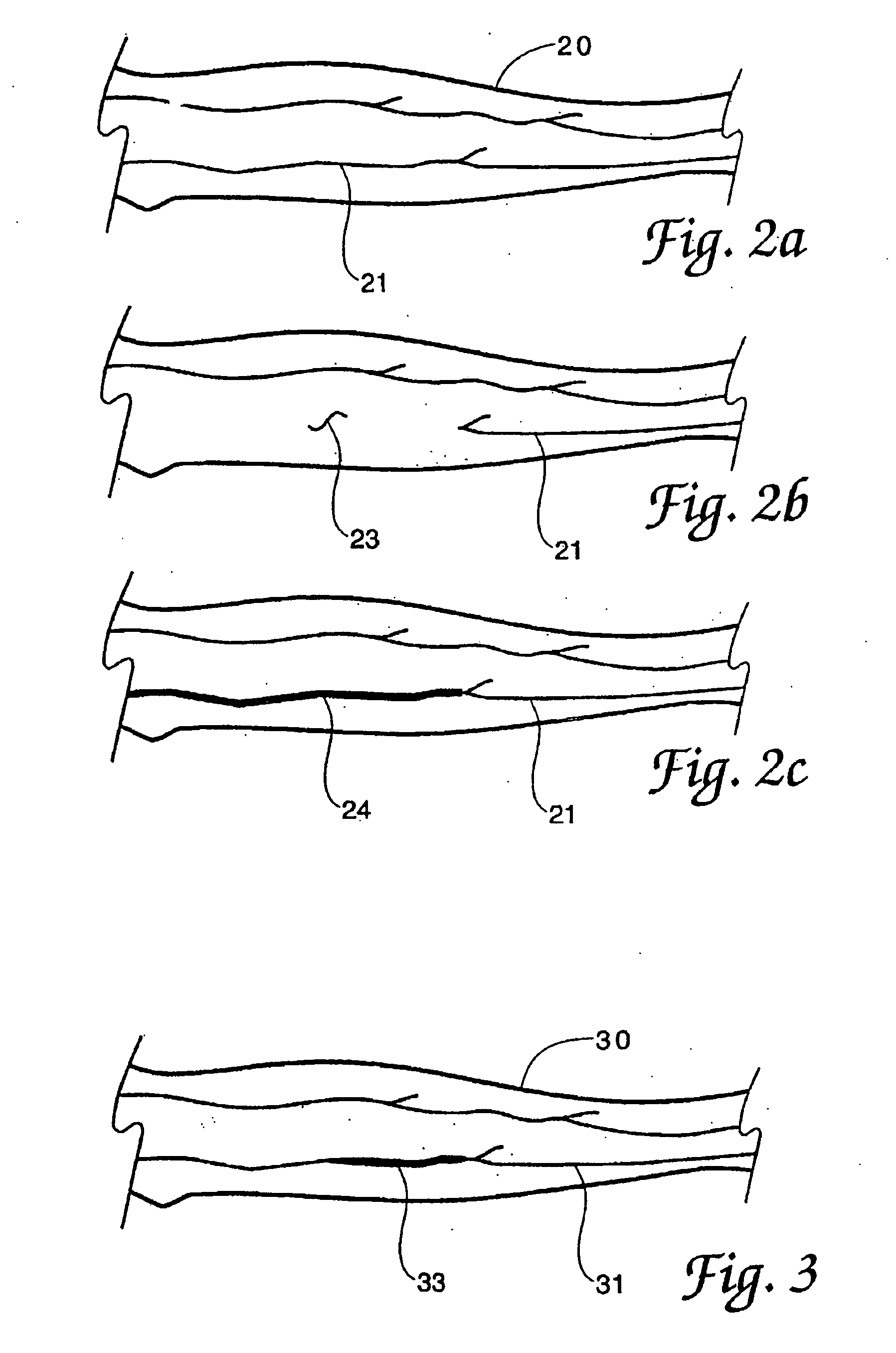Method for detection and display of extravasation and infiltration of fluids and substances in subdermal or intradermal tissue
a technology of fluids and substances, applied in the field of medical devices and procedures, can solve the problems of tissue damage, extravasation and infiltration, discoloration of the skin,
- Summary
- Abstract
- Description
- Claims
- Application Information
AI Technical Summary
Problems solved by technology
Method used
Image
Examples
Embodiment Construction
[0027] Referring now to the drawings, FIG. 1 illustrates the method of the invention in one of its embodiments for imaging extravasation or infiltration, wherein a surface area of the body, such as forearm 10, is placed near an NIR light source 11 and between source 11 and detector 13 (in the transillumination mode of the invention), in order to perform a particular procedure, such as in the administration of a specific substance into the vasculature (artery or vein 17) using IV instrument 15. Source 11 preferably emits light in the wavelength range of about 0.3 to 1.0 microns (μm), and detector 13 is sensitive to light in that range. Alternatively, source 11 could be placed to directly illuminate forearm 10 such that a reflected NIR image of the infusion area 16 at instrument 15 is viewed. Source 11 can also be placed near the area of interest of forearm 10 such that scattered light is used to illuminate the area of interest. Detector 13 is focused upon the area of interest and doe...
PUM
 Login to View More
Login to View More Abstract
Description
Claims
Application Information
 Login to View More
Login to View More - R&D
- Intellectual Property
- Life Sciences
- Materials
- Tech Scout
- Unparalleled Data Quality
- Higher Quality Content
- 60% Fewer Hallucinations
Browse by: Latest US Patents, China's latest patents, Technical Efficacy Thesaurus, Application Domain, Technology Topic, Popular Technical Reports.
© 2025 PatSnap. All rights reserved.Legal|Privacy policy|Modern Slavery Act Transparency Statement|Sitemap|About US| Contact US: help@patsnap.com



